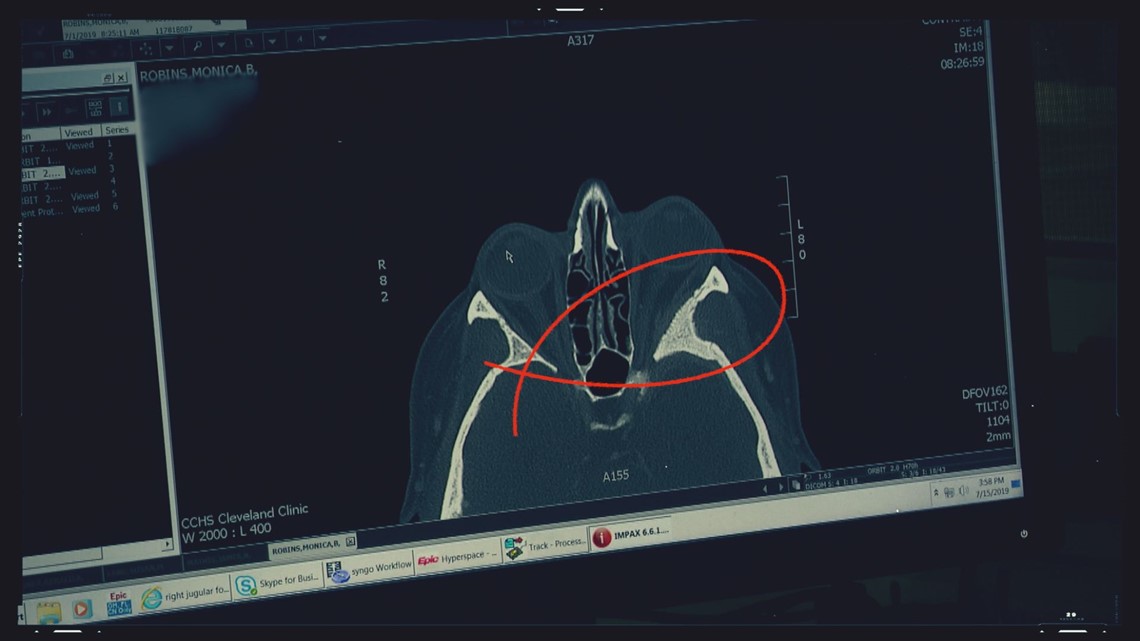CLEVELAND — On Monday, we told you about our own Monica Robins and her battle with a brain tumor. Click here to watch and read that story.
As our senior health correspondent, Monica wants to explain to us exactly what type of tumor it is to raise awareness and help us better understand what she's facing.
Believe it or not, there are more than 130 different types of brain tumors. Here's what you need to know about mine.
I have what's known as a meningioma, and while it's referred to as a brain tumor, it's actually formed from the meninges, or the three thin layers of tissue covering my brain and spinal cord.
Meningiomas are the most common of diagnosed brain tumors, and I'm one of the nearly 32,000 diagnosed with this type each year in the U.S. My type of tumor is more common in women, and typically affects people over age 40.
This is the same type of tumor that Maria Menounos, Kate Walsh, Sheryl Crow, Elizabeth Taylor and Mary Tyler Moore had.
Eighty percent of meningiomas are non-cancerous or benign, meaning it won't spread to other parts of the body. Still, benign tumors can be life-threatening, depending where they're located in the brain.
Meningiomas are usually slow growing and symptoms develop gradually. They typically don't appear until the tumor is large enough to interfere with normal brain function. Symptoms can include headaches, memory loss, loss of smell, hearing loss, facial pain, vision problems, weakness in limbs, personality changes and seizures.
While the type of tumor I have is common, the location is rare, and my surgeon sees about four cases like mine each year. It's called a spheno orbital meningioma.
The sphenoid wing is the side of the skull, and the tumor is located behind my left eye, causing my eye to protrude and push the left hemisphere of my brain back.
Unfortunately, my tumor is not easily removable. Parts of it are in my bone and on top of my optic nerve and carotid artery. My surgeon will take as much as possible out, but because of the risk of blindness or stroke, the latter parts of the tumor will be left behind.
I'll have a titanium plate in my head and once we figure out if my tumor is benign, aggressive or cancerous, we'll make our next game plan, which could be watch, wait or radiation.
These tumors have a high rate of recurrence, so this could likely be the first step of a long journey, but I have every intention of being a warrior every step of the way.
My symptoms developed about two years ago, and included eyelid swelling and tearing, which my doctors reasonably thought were attributed to allergies and dry eye. But those symptoms worsened over time and my vision became impacted.
Like most benign tumors, min was discovered because we were ruling out something else, and found it on a CT scan.


You may be wondering how I got this. The causes of meningioma are not fully understood. What we do know is radiation is a known cause, so one of the things I would recommend is being aware of your exposure. For example, if your dentist recommends a dental x-ray each year, and you have no health issues, say no, even if it's covered by insurance. In fact, the American Dental Association recommends x-ray intervals of 24 to 36 months.
Other causes could be hormones and genetic mutations. The latter may be pertinent to me, as we found a brain tumor in my father three weeks before his death.
Bottom line, be self-aware and speak up if you think something is wrong. Had I not asked my allergist about my eye swelling and had she not recommended I see a specialist who then recommended a CT scan, I may have been blind, or worse, by the time we found my tumor. You are your own best health advocate and you have control over your health.
Share your well wishes for Monica on our Facebook and Instagram pages, and be sure to use the hashtag #MonicaRocks.

